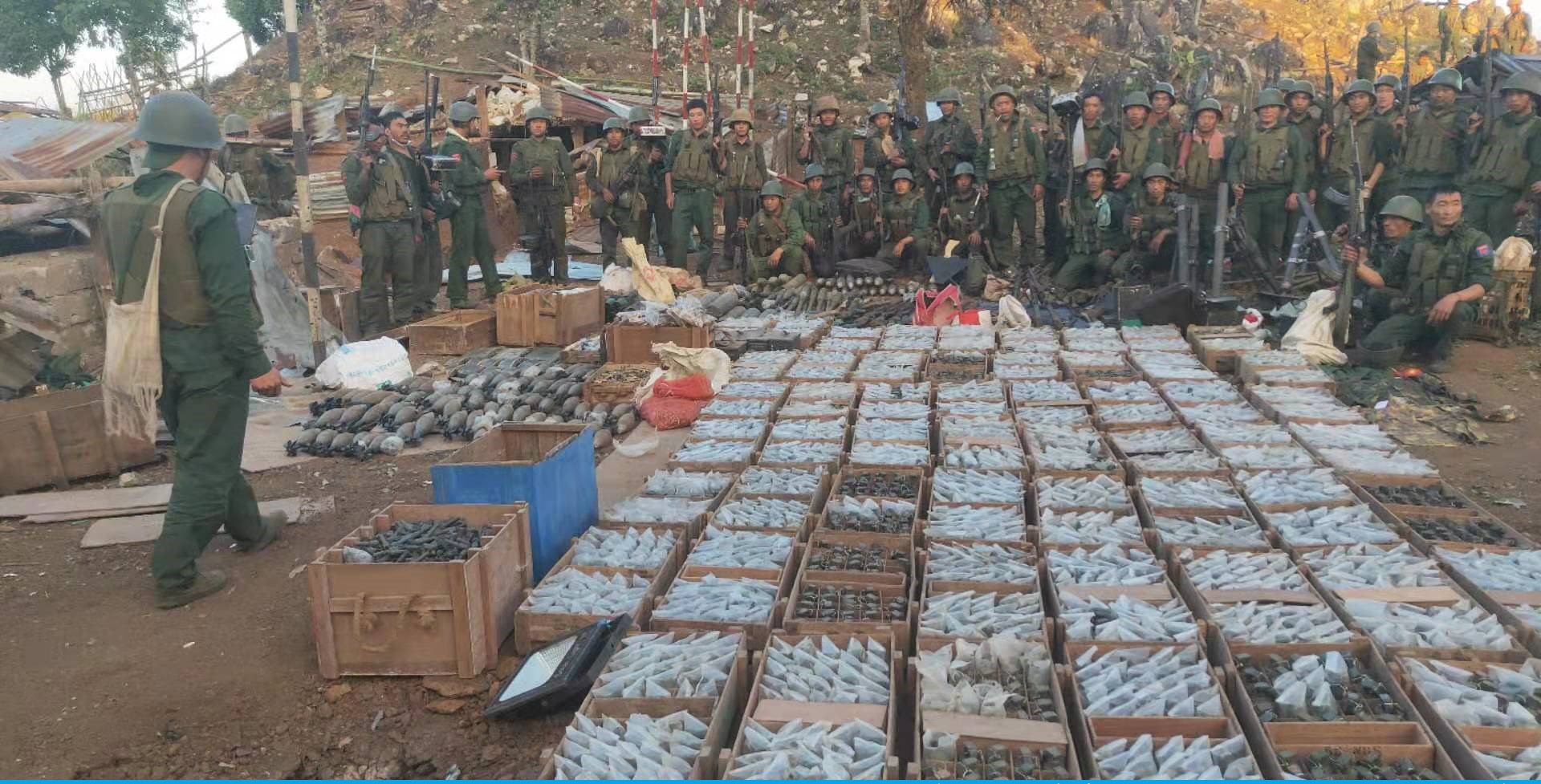“The Myanmar military will remain unified and eventually emerge victorious over the opposition and resistance forces.” Recent events have shown this view—widely taken as gospel by observers and foreign governments since the 2021 coup—to be both facile and utterly false.
Under Operation 1027, launched on the 27th of last month, an alliance of ethnic armed organizations has rapidly captured scores of key military outposts in northern Shan State and seized key trade routes linking Myanmar with China. This new offensive, timed to coincide with the end of the rainy season, shows that ethnic armed resistance forces have grown in terms of firepower and overall military capabilities, and enjoy both high morale and popular support. The regime has no such backing from the public.
The insurgents have also seized large hauls of arms and ammunition, indicating that many Myanmar troops either fled or surrendered.
In the early days of the offensive, the Brotherhood Alliance, comprising the Myanmar National Democratic Alliance Army (MNDAA), an ethnic Kokang Chinese group; the Ta’ang National Liberation Army (TNLA), an ethnic Palaung group; and Rakhine group the Arakan Army (AA), simultaneously overran several key border towns and highways linking Myanmar with China.

China has called on Myanmar to cooperate with it “to maintain stability along the border, earnestly ensure the safety of the lives and property of Chinese border residents, and take effective measures to strengthen the security of Chinese personnel.”
The Myanmar regime said it was trying to restore order near the border, but in reality its control of the area is crumbling.
Operation 1027 has become a household name in Myanmar and among opposition forces. Several People’s Defense Force (PDF) resistance groups aligned with the Brotherhood Alliance are also taking part.
It is estimated that over 20,000 fighters are involved in the offensive, which is expected to be a prolonged operation.
The offensive has exposed the low morale among the junta’s ranks, and the nature of the defeats shows they do not want to fight.
As the offensive in the north was kicking off, in the south, the Karen National Liberation Army (KNLA) and allied PDF groups attacked the town of Kawkareik on the Asia Highway linking Yangon with Myawaddy on the Thai border, in a sign that southern Myanmar is also slowly coming under the control of ethnic insurgents and PDFs.
On yet another front, Mandalay PDF attacked Myanmar troops in Pyin Oo Lwin (a garrison town also known as May Myo) and Mogoke townships. The ability of resistance forces to mount such well-coordinated attacks across the country means the regime’s days are numbered.
The offensive was launched barely two weeks after the State Administration Council, as the regime calls itself, held a high-profile event to mark the eighth anniversary of the Nationwide Ceasefire Agreement (NCA) hosted by junta boss Min Aung Hlaing in Naypyitaw. After the NCA event, a flurry of “peace specialists” visited Naypyitaw and held meetings and workshops with military officers. It is unclear what purpose they could have had in taking part, other than to help prop up the regime.
This time the opposition will have to show that they are stronger, united, and well-coordinated. Burman leadership should speak up more on the future federal democratic nation that will eventually emerge in Myanmar.
The regime is under stress. Min Aung Hlaing has increasingly lost face among the top leadership of his regime, as anti-coup demonstrations on the streets have morphed into a full-fledged armed resistance in reaction to the military’s violent crackdowns. The economic and financial situation is dire and the country remains unstable.
Can Min Aung Hlaing control the country? Clearly not.
Will the top SAC leaders move to replace him? Not only is he corrupt—he’s an undeniably incompetent general.
Recently, one of his most trusted aides was charged with corruption and handed a long sentence. The Myanmar regime’s “kickback king,” Lieutenant General Moe Myint Tun, was jailed for corruption after an investigation that saw the arrest of one of his key subordinates and the interrogations of many businessmen who had dealings with the lieutenant general.
As the more astute analysts of Myanmar have long suggested, the military could very well implode. Fearing for their lives, several ex-military leaders and their families have bought residences in neighboring countries, in case they need a place to run to.
Before the end of this year, Myanmar should see some political changes as the resistance forces continue to gain strength. The regime, if it had any sense, would replace Min Aung Hlaing and select a less incompetent chief, assuming there is one. Then enter negotiations.

















